It looks like you're using an Ad Blocker.
Please white-list or disable AboveTopSecret.com in your ad-blocking tool.
Thank you.
Some features of ATS will be disabled while you continue to use an ad-blocker.
share:
How much credit can we give to our ancient ancestors?
They built some of the most amazing structures on earth in a time we today would class as the Stone Age when compared with our modern technology today... But even given credit for that! what if they were more futuristic than we have been led to believe?
What if they were more futuristic that we are today?
Is that even possible?
In technological terms... Perhaps?
Is it possible the Mayans and Egyptians had holographic technology which allowed a medium for spirit world and/or cosmic interactions?
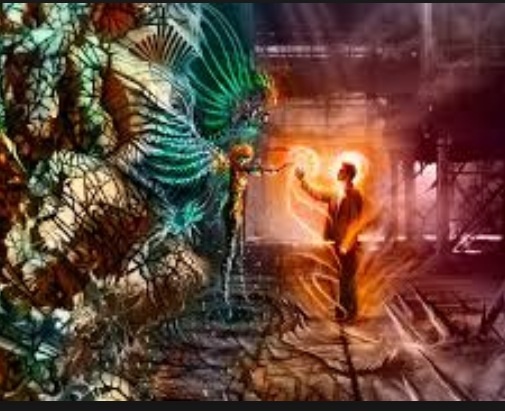
The theory begins with the recent discovery of mercury at Teotihuacan.
www.abovetopsecret.com...
www.theguardian.com...-2
That is all we know but not for sure based on archeological finds and "expert information"... now for the technology.
The chambers in the great pyramids are pink granite and has a quartz like structure. Two components for this light producing technology....
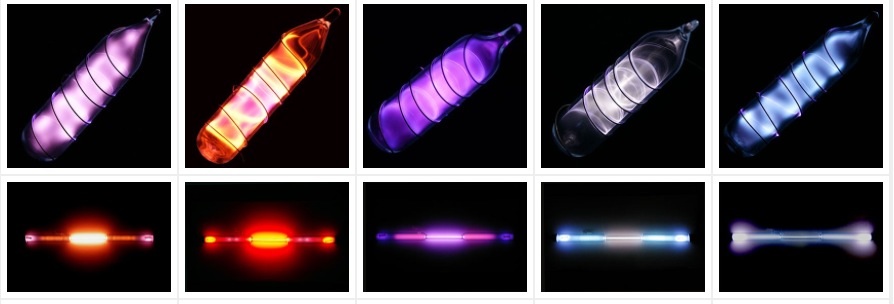
www.photonsoundbeam.com...
variables in gasseous mixtures could allow conciousness ingress to different locations/levels ect. Concocting a chemical address books for quantum bilocation experience perhaps with nebulous giant noble gas figures in the cosmos.
www.abovetopsecret.com...
Or similarly the gasses could allow a medium for the giants to manifest on this physical plane.
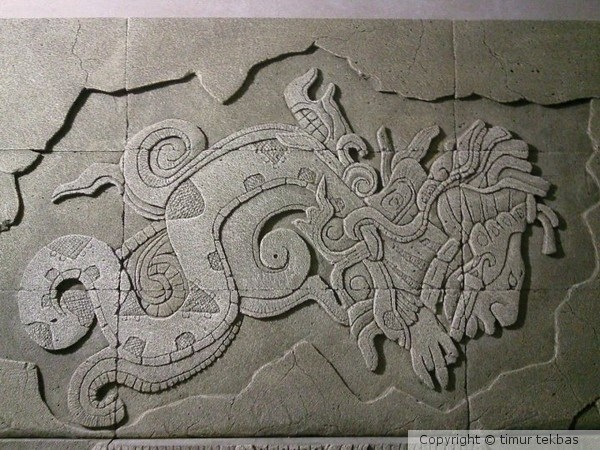
www.abovetopsecret.com...
The ancient teachings/magic/potions/spells/rituals ect at different locations produced experiences of communication and interactions on different planes and cosmic locations, using the pyramids surrounding mass as a kind of conductor or generator. While sitting in a liquid... Water? The adept would become like a electrode in the chamber hued with Nobel gasses...
When electricity is arced through the gas the whole atmosphere will light up and be connected to the initiate...
The idea springing from this picture from the south Americas. In this chamber something seems to be happening in the air...
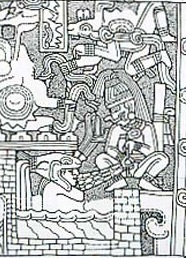
en.m.wikipedia.org...
Is mercury evaporating from the bowl and a spirit manifesting in the vapour?
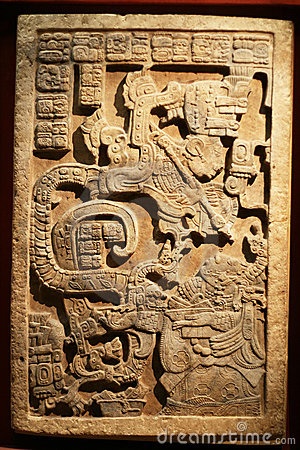
To be cont...
They built some of the most amazing structures on earth in a time we today would class as the Stone Age when compared with our modern technology today... But even given credit for that! what if they were more futuristic than we have been led to believe?
What if they were more futuristic that we are today?
Is that even possible?
In technological terms... Perhaps?
Is it possible the Mayans and Egyptians had holographic technology which allowed a medium for spirit world and/or cosmic interactions?

The theory begins with the recent discovery of mercury at Teotihuacan.
www.abovetopsecret.com...
Mexican researcher Sergio Gómez announced on Friday that he had discovered “large quantities” of liquid mercury in a chamber below the Pyramid of the Feathered Serpent, the third largest pyramid of Teotihuacan, the ruined city in central Mexico.
The shimmering, reflective qualities of liquid mercury may have resembled “an underworld river, not that different from the river Styx,” Headrick said, “if only in the concept that it’s the entrance to the supernatural world and the entrance to the underworld.”
“Mirrors were considered a way to look into the supernatural world, they were a way to divine what might happen in the future,” she said. “It could be a sort of river, albeit a pretty spectacular one.”
Joyce said that archaeologists know that scintillation fascinated the ancient people generally, and that the liquid mercury may have been regarded as “somewhat magical … there for ritual purposes or symbolic purposes.”
www.theguardian.com...-2
That is all we know but not for sure based on archeological finds and "expert information"... now for the technology.
mercury is the only metallic element that is liquid at standard conditions.
It is used in lighting: electricity passed through mercury vapor in a fluorescent lamp produces short-wave ultraviolet light which then causes phosphor to fluoresce, making visible light.
In 1860, John Thomas Way used arc lamps operated in a mixture of air and mercury vapor at atmospheric pressure for lighting
Low-pressure mercury-vapor lamps usually have a quartz bulb in order to allow the transmission of short wavelength light
The chambers in the great pyramids are pink granite and has a quartz like structure. Two components for this light producing technology....
Mercury has a unique electron configuration where electrons fill up all the available subshells. Because this configuration strongly resists removal of an electron, mercury behaves similarly to noble gas elements.

Perhaps, the most profound value of Noble Gas Technology lies in the exotic healing value of the gases themselves. Not only do these special elements provide an excellent medium for the transfer of an electrical field of energy, they also provide an access to what is called ether, or the "gap," as Deepak Chopra calls it.
Allowing the full frequency electrical energy to travel across air and ether inside a glass tube adds a unique multidimensional component. It is within this gap that photon energy can be expressed in its primordial state, acting just as it does in the expansive void of intergalactic space. It is here that the essence of these most stable elements comes alive.
Many believe these gases act as windows to other dimensional realities and are integral to higher states of consciousness that once prevailed on Earth.
Walter Russel, renowned spiritual scientist, described the Noble Gases as holographic representatives of all the other elements in the universe or "octaves of integrating light."
www.photonsoundbeam.com...
variables in gasseous mixtures could allow conciousness ingress to different locations/levels ect. Concocting a chemical address books for quantum bilocation experience perhaps with nebulous giant noble gas figures in the cosmos.
www.abovetopsecret.com...
Or similarly the gasses could allow a medium for the giants to manifest on this physical plane.

www.abovetopsecret.com...
The ancient teachings/magic/potions/spells/rituals ect at different locations produced experiences of communication and interactions on different planes and cosmic locations, using the pyramids surrounding mass as a kind of conductor or generator. While sitting in a liquid... Water? The adept would become like a electrode in the chamber hued with Nobel gasses...
When electricity is arced through the gas the whole atmosphere will light up and be connected to the initiate...
The idea springing from this picture from the south Americas. In this chamber something seems to be happening in the air...

Many historic applications made use of the peculiar physical properties of mercury, especially as a dense liquid and a liquid metal:
In November, 2014 "large quantities" of mercury were discovered in a chamber 60 feet below the 1800 year old pyramid known as the "Temple of the Feathered Serpent," "the third largest pyramid of Teotihuacan," Mexico along with "jade statues, jaguar remains, a box filled with carved shells and rubber balls."
The ancient Greeks used mercury in ointments; the ancient Egyptians and the Romans used it in cosmetics. In Lamanai, once a major city of the Maya civilization, a pool of mercury was found under a marker in a Mesoamerican ballcourt.
Quantities of liquid mercury ranging from 90 to 600 grams (3.2 to 21.2 oz) have been recovered from elite Maya tombs or ritual caches at six sites. This mercury may have been used in bowls as mirrors for divinatory purposes.
en.m.wikipedia.org...
Is mercury evaporating from the bowl and a spirit manifesting in the vapour?

To be cont...
Cont...
Pyramid powered projector...
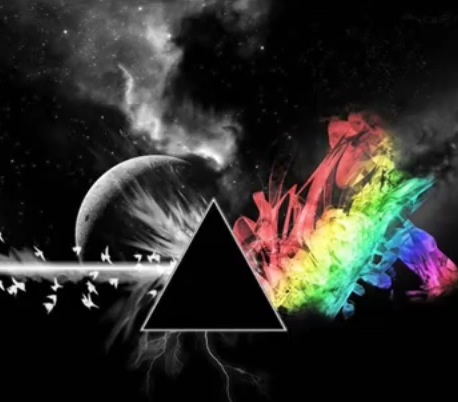
The pyramid as the power generator to charge the noble gasses and ignite natural hologram experiences, possibly fractals of the cosmos itself is what the theory proposes and first off we find it is hinted at, perhaps hidden in the root of the word itself...
Tomb contradictions
www.scottcreighton.co.uk...
All are suggestive of the chambers somehow "lighting up" but this little gem was perfect!...
"The temple was Per-Ba (House of the Soul) and the tomb was Per-Ka (House of the Physical Projection) according to the indigenous tradition"
www.ancient-wisdom.co.uk...
Pyramid powered projector...

The pyramid as the power generator to charge the noble gasses and ignite natural hologram experiences, possibly fractals of the cosmos itself is what the theory proposes and first off we find it is hinted at, perhaps hidden in the root of the word itself...
The development of such unparalleled 'super-structures' at this time, along with such a dramatic change in the social order and worship strongly supports the idea of another, as yet unidentified influence in the Nile valley culture. In addition, there are several compelling facts which tend to suggest that the traditional 'pyramids as tombs' theory can no longer be considered sufficient to explain the presence of such developments at this time.
Tomb contradictions
www.scottcreighton.co.uk...
According to the theosophical tradition the Great Pyramid was originally used as a temple of initiation. This idea was researched by Marsham Adams, who in 1895, wrote the book 'The Book of the Master' (...of the Hidden House), in which he showed that 'The soul of the departed is pictured as following the passages and chambers of the great pyramid. They enter into the Hidden Places and penetrate the secret of the House of Light (compare the ancient Egyptian name for the Great Pyramid - "Khut," or "Light").
The Egyptian name for the pyramids is 'Khuti' - 'The lights'. Davidson (2) believed that this name originated from the semetic equivelant which was 'Urim' - 'The lights'. In Phrygian and Greek, the root 'Ur' - 'light', became successively 'Pur' and 'Pyr' (fire), and 'Pyra' (Plural).
Well known American Egyptologist Mark Lehner has stated that the ancient Khemitian term for pyramid was something he calls MR.Pyramid. Lehner bases this on his translation of MR as "Place of Ascension"
However, the ancient Khemitians apparently used the term PR.NTR, Per-Neter, for pyramid. Per means "house" and Neter has been translated by Egyptologists as "God" or "Goddess". However, this could also be translated as "House of Nature, or House of Energy" for Per-Neter. . With this understanding of Per-Neter as House of Nature, god or energy, we are given three different interpretations of the word 'pyramid'.
The Greek word 'Pyramidos' has an interesting meaning. If we support Dunn's ideas that the energy reactions in the Great Pyramid took place in the so-called Queen's and King's Chambers, then certainly it was 'Fire in the Middle'.
Chapman holds that the pyramid is born of the roots 'pyr', 'em', and 'us', meaning 'Far resplendent light/fire'
All are suggestive of the chambers somehow "lighting up" but this little gem was perfect!...
"The temple was Per-Ba (House of the Soul) and the tomb was Per-Ka (House of the Physical Projection) according to the indigenous tradition"
www.ancient-wisdom.co.uk...
(post by BaltimoreRioter removed for a serious terms and conditions violation)
Great information, good job presenting material. I believe there were more advanced civilizations cyclically rising and falling. This would be a
topic I have more faith in than religion.
Very Interesting!! The bowl of Mercury could also be seen as a portal of sorts. A dimensional doorway that is reflective (like a mirror)..
Some have said that Lucas wrote Stars Wars because he was told it was ancient history...
Some have said that Lucas wrote Stars Wars because he was told it was ancient history...
a reply to: paralemptor
Lol this was how I created my user name
On topic, by the looks of it mercury is a some sort of star gate?
Lol this was how I created my user name
On topic, by the looks of it mercury is a some sort of star gate?
a reply to: Wifibrains
Out of thin air, I was struck with a thought that perhaps comes from something I've read in the past. I simply don't know, but it is an interesting thought, I think. Could it be that the Great Pyramid was once covered with a copper sheath that conducted and channeled an energy force? Given that it was/is a valuable metal, we can easily understand why we find no trace of that shroud remaining. Its dismantling and merchandising by subsequent rulers of the area could explain the wealth and growth of those regimes when they had little else of value to sell or trade.
Such a structure would be akin to a huge Fariday Cage in some respects.
Out of thin air, I was struck with a thought that perhaps comes from something I've read in the past. I simply don't know, but it is an interesting thought, I think. Could it be that the Great Pyramid was once covered with a copper sheath that conducted and channeled an energy force? Given that it was/is a valuable metal, we can easily understand why we find no trace of that shroud remaining. Its dismantling and merchandising by subsequent rulers of the area could explain the wealth and growth of those regimes when they had little else of value to sell or trade.
Such a structure would be akin to a huge Fariday Cage in some respects.
a reply to: Aliensun
That is a interesting thought. I had not even thought about the outside materials yet. I'm still looking to solidify what has been presented in regards to noble gasses and the crystalline rock which has a lattice structure in the chambers being able to project imagery into the gas and electrically arcing through the initiate giving a interactive hologram experience as if sitting inside a neon lightbulb and being one of the electrodes.
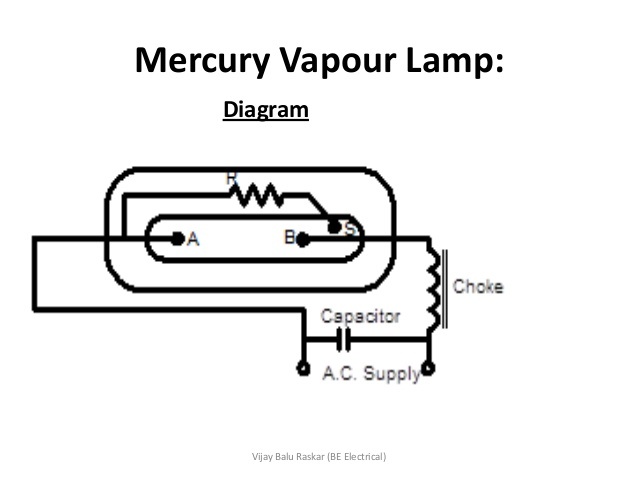
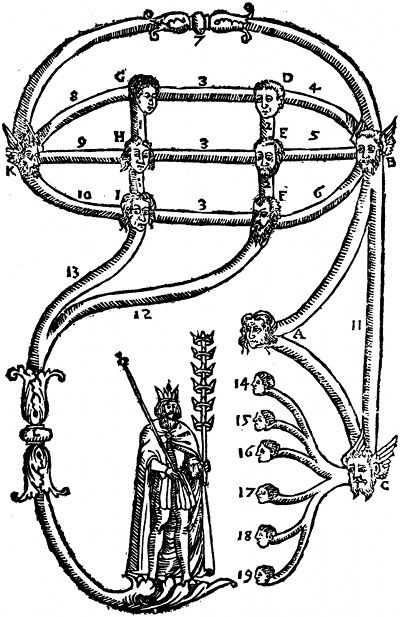

I found some very interesting stuff already that point to a blueprint for the experience already inside the crystalline rock like a film in a projector that would project into the gas creating the holographic light show... In line with the first thread "atum, cosmic avatar"...
"...The first occurrence of creation will be screening In the kings chamber tonight!"
If it turns into a long post I might create it as a part2 thread.
Thanks for that thought! It is something that will definitely be considered later on...
That is a interesting thought. I had not even thought about the outside materials yet. I'm still looking to solidify what has been presented in regards to noble gasses and the crystalline rock which has a lattice structure in the chambers being able to project imagery into the gas and electrically arcing through the initiate giving a interactive hologram experience as if sitting inside a neon lightbulb and being one of the electrodes.



I found some very interesting stuff already that point to a blueprint for the experience already inside the crystalline rock like a film in a projector that would project into the gas creating the holographic light show... In line with the first thread "atum, cosmic avatar"...
"...The first occurrence of creation will be screening In the kings chamber tonight!"
If it turns into a long post I might create it as a part2 thread.
Thanks for that thought! It is something that will definitely be considered later on...
edit on 29-4-2015 by Wifibrains because: (no reason given)
edit on 29-4-2015 by Wifibrains because: (no reason
given)
Why is it that so many people are so eager to believe this nonsense? Is it because they find actual history/archaeology/anthropology too boring? Have
they seen one too many episodes of Ancient Aliens, and can no longer seperate the lies of Von Daniken, Tsoukalos, Childress, et al. from reality? Are
they so dissatisfied with their own mundane lives that they cling to and live vicariously through whatever exciting, romantic fiction they can find?
SNIP Why do the mods allow such blatantly fictional and nonsensical threads to remain in this forum? These are the questions that keep me up at
night....
edit on 4/29/2015 by AdmireTheDistance because: (no reason given)
a reply to: AdmireTheDistance
Because their isn't a alternative history forum? and its good to challenge the mainstream its a conspiracy site. this is not the history museum. Dhh.
Don't loose any sleep over it, if you don't like such threads keep your distance, don't just admire it.
]Why do the mods allow such blatantly fictional and nonsensical threads to remain in this forum? These are the questions that keep me up at night....
Because their isn't a alternative history forum? and its good to challenge the mainstream its a conspiracy site. this is not the history museum. Dhh.
Don't loose any sleep over it, if you don't like such threads keep your distance, don't just admire it.
originally posted by: Wifibrains
and its good to challenge the mainstream its a conspiracy site.
I agree (to a point)...And just to be clear, I don't have any issues with people entertaining occasional far-out, fantastical ideas about history. It's good to exercise one's imagination. I certainly do. When people take those fun, crazy thoughts, and start to believe that they have some sort of basis in reality, despite overwhelming amounts of actual science and evidence to the contrary, that's when I take issue. Our collective past is perfectly exciting as is, without all the uneducated fantasy, outright lies, and willful ignorance muddying it up.
Out of legitimate curiosity, and since you brought up the term "alternative history", I've got a question: How do you differentiate "alternative history" from pure fantasy?
originally posted by: AdmireTheDistance
originally posted by: Wifibrains
and its good to challenge the mainstream its a conspiracy site.
I agree (to a point)...And just to be clear, I don't have any issues with people entertaining occasional far-out, fantastical ideas about history. It's good to exercise one's imagination. I certainly do. When people take those fun, crazy thoughts, and start to believe that they have some sort of basis in reality, despite overwhelming amounts of actual science and evidence to the contrary, that's when I take issue. Our collective past is perfectly exciting as is, without all the uneducated fantasy, outright lies, and willful ignorance muddying it up.
Out of legitimate curiosity, and since you brought up the term "alternative history", I've got a question: How do you differentiate "alternative history" from pure fantasy?
Weather or not it falls into the realm of possibility.
Everything here is backed up, and I'm providing plenty of links... It's not something I am just making up there is a theory, and concept, it only needs to be plausible to be possible.
Similar to the egyptians the maya would not not live in a world full of "things"... Everything was made of spirit and given individuality purpose and personality. If the ancients were going to make technology out of their environment it would not be external something like a iphone to have and to hold, it would be something they could go within and experience.
a reply to: AdmireTheDistance As humans, the only history we know is what we are taught and read/ hear. We find even today's
technology can be flawed, sometimes it is pure BS. As earth's dwellers we look at the pyramids, structures, places like Easter island, Puma Punku,
and the many, many others and ponder how the heck hut dwellers came up with the basic idea... much less constructed such wonders we cannot duplicate
in 2015. We find places and structures that are just amazing and unanswerable as to how they could even exist at all. There was much lost during the
destruction of the Alexandria library and other forms of evidence that surely existed, TPTB throughout time have hidden and destroyed evidence and
this is still going on today right there in the cradle of civilization (ISIS). The Sumarians, ancient China with stories of flying items, American
Indians stories of fantastic experiences, the list goes on and on. There was, without doubt some serious tech in Earth's past for these clues to
exist and some are much older than 10 thousand years old. The fact that we ponder on about how, what, who etc only makes us curious, not flawed, if we
do not just buy the "official" word hook, line and sinker, I think it makes us extremely curious as to how the heck this was done, what is the key
element, what is the make up of it? People like Tesla thought out of the warehouse...not just the box, and we are still only seeing parts of his
dreams or views having real applications. Tesla was far ahead of Edison, just not as well funded or connected. The real truth of our past may never
see the light of day...but we should never be faulted for trying to shine a particle of light on the possibilities....
a reply to: Wifibrains
Read the Indian Vedas and the descriptions of Vimanas..or ancient aerial / flying machines.
They, according to the ancient texts were piloted flying vehicles, capable to interplanetary and atmospheric flight and were built in many configurations and sizes from single pilot small craft, right up to flying city sized (motherships).
The interesting thing in regards to your OP, is that Teotihuacan with it's flat, raised platforms resembling landing pads for VTOL type craft, has long been conjectured to be a staging area for advanced flying craft in antiquity.
A spaceport / airport if you will.
The interesting thing, is that the Indian Vimana flying machines, from 1000's of years ago, were written as having a MERCURY powered propulsion system / energy system!
Mercury powered....
So we have Teotihuacan, and it's hypothesised spaceport landing pads, the Ancient Indian Vimanas powered by some kind of device that utilised Mercury, and now, at the theorised 'spaceport' we have found Mercury in large quantities.
This river of Mercury beneath one of the main structures at Teotihuacan, could have nothing to do with spiritual scrying devices, or spiritual mirrors or things like that, and could have everything to do with being there as a fuel supply for landing and departing fleets of interplanetary ships in the remote past...
Just a thought.
Read the Indian Vedas and the descriptions of Vimanas..or ancient aerial / flying machines.
They, according to the ancient texts were piloted flying vehicles, capable to interplanetary and atmospheric flight and were built in many configurations and sizes from single pilot small craft, right up to flying city sized (motherships).
The interesting thing in regards to your OP, is that Teotihuacan with it's flat, raised platforms resembling landing pads for VTOL type craft, has long been conjectured to be a staging area for advanced flying craft in antiquity.
A spaceport / airport if you will.
The interesting thing, is that the Indian Vimana flying machines, from 1000's of years ago, were written as having a MERCURY powered propulsion system / energy system!
Mercury powered....
So we have Teotihuacan, and it's hypothesised spaceport landing pads, the Ancient Indian Vimanas powered by some kind of device that utilised Mercury, and now, at the theorised 'spaceport' we have found Mercury in large quantities.
This river of Mercury beneath one of the main structures at Teotihuacan, could have nothing to do with spiritual scrying devices, or spiritual mirrors or things like that, and could have everything to do with being there as a fuel supply for landing and departing fleets of interplanetary ships in the remote past...
Just a thought.
a reply to: Wifibrains
You nailed it!
Today many people don't even want to know the truth about the eternal spirit or at least be open minded about what ifs?
If you look at some of the stuff from this perspective it makes a lot of more sense for me. And I think that ancient civilizations were more spiritually knowledgeable and they have actually lived it. Not like us who are just playing with the idea in our heads and go to church
You nailed it!
Today many people don't even want to know the truth about the eternal spirit or at least be open minded about what ifs?
If you look at some of the stuff from this perspective it makes a lot of more sense for me. And I think that ancient civilizations were more spiritually knowledgeable and they have actually lived it. Not like us who are just playing with the idea in our heads and go to church
a reply to: AdmireTheDistance
If they're anything like me, they simply enjoy it.
Nothing particularly earth shattering, but there you go.
I would say the same about people that spend every waking moment obsessed with football or other sports...can't understand it myself, but millions seem to get a buzz out of watching sport.
Or religion, millions are obsessed with that..and it baffles me as to why they would be, but i suppose i just accept that there are different strokes for different folks..it would be nice if similar live and let live courtesies were extended to the millions who are occupied with esoteric and paranormal pursuits and interests.
If they're anything like me, they simply enjoy it.
Nothing particularly earth shattering, but there you go.
I would say the same about people that spend every waking moment obsessed with football or other sports...can't understand it myself, but millions seem to get a buzz out of watching sport.
Or religion, millions are obsessed with that..and it baffles me as to why they would be, but i suppose i just accept that there are different strokes for different folks..it would be nice if similar live and let live courtesies were extended to the millions who are occupied with esoteric and paranormal pursuits and interests.
a reply to: MysterX
Yeah, I seen something similar proposed on ancient aliens or something like that.
I wonder if the vimanas with their mercury could also be interpreted as a kind of simulated reality vehicle, interactive hologram, merkaba that seemed to take them to the stars but the quantum fractal hologram brought the stars to the Indians... They did not actually move off of the rug and thus came also the idea of the flying carpet...
Yeah, I seen something similar proposed on ancient aliens or something like that.
I wonder if the vimanas with their mercury could also be interpreted as a kind of simulated reality vehicle, interactive hologram, merkaba that seemed to take them to the stars but the quantum fractal hologram brought the stars to the Indians... They did not actually move off of the rug and thus came also the idea of the flying carpet...
edit on 29-4-2015 by Wifibrains because: (no reason given)
a reply to: AdmireTheDistance
i feel sorry for you, they obviously got to you,perhaps too much flouride?, dont think outside they box,better yet dont think at all, just accept what the mainstream tells you
i feel sorry for you, they obviously got to you,perhaps too much flouride?, dont think outside they box,better yet dont think at all, just accept what the mainstream tells you
a reply to: AdmireTheDistance
also i dont buy into what ancient aliens preaches thats nonsesnse ,however there is much more to the ancient temples and pyramids then the mainstream archeologists say
also i dont buy into what ancient aliens preaches thats nonsesnse ,however there is much more to the ancient temples and pyramids then the mainstream archeologists say
new topics
-
Half-Life 2 is 20 Years Old - its Also Free on Steam until the 18th
Video Games: 3 hours ago -
Does the Trump win mean No More Taylor Swift??
Politicians & People: 6 hours ago -
Trump-appointed judge blocks Biden administration overtime rule
Social Issues and Civil Unrest: 8 hours ago
top topics
-
Don't cry do Cryo instead
General Chit Chat: 14 hours ago, 12 flags -
Does the Trump win mean No More Taylor Swift??
Politicians & People: 6 hours ago, 12 flags -
Trump-appointed judge blocks Biden administration overtime rule
Social Issues and Civil Unrest: 8 hours ago, 7 flags -
Tariffs all around, Except for ...
Dreams & Predictions: 16 hours ago, 6 flags -
Half-Life 2 is 20 Years Old - its Also Free on Steam until the 18th
Video Games: 3 hours ago, 1 flags
active topics
-
Mood Music Part VI
Music • 3703 • : underpass61 -
Old School Punk
Music • 560 • : underpass61 -
Does the Trump win mean No More Taylor Swift??
Politicians & People • 43 • : TzarChasm -
Don't cry do Cryo instead
General Chit Chat • 9 • : Myhandle -
President-Elect DONALD TRUMP's 2nd-Term Administration Takes Shape.
Political Ideology • 207 • : EyeoftheHurricane -
WATCH LIVE: US Congress hearing on UFOs, unidentified anomalous phenomena
Aliens and UFOs • 96 • : putnam6 -
Thanksgiving 2024
Member Art • 20 • : argentus -
Mike Tyson returns 11-15-24
World Sports • 66 • : matafuchs -
Trump-appointed judge blocks Biden administration overtime rule
Social Issues and Civil Unrest • 7 • : NoCorruptionAllowed -
Anybody else using Pomodoro time management technique?
General Chit Chat • 12 • : Cabin
